Robotic Hands: An Easier Life for Us?
Robotic hands are doing it all—assembling gadgets, helping people, and even turning trash into treasure! Find out how these handy helpers are making life cooler, greener, and more fun.

Robotic parts have many functions to help make life processes easier for humans. They can allow control to happen remotely without the presence of humans on site. Singapore’s researchers design and deploy robots for various tasks and projects .
A robotic hand is a mechanical device designed to emulate the function and dexterity of a human hand. They are typically mounted on robotic arms and use motors, actuators, sensors and control systems, to grip, move and rotate objects.
Robotic hands play a role in the medical sector. They can function as prosthetics , which are artificial devices that replaces a missing body part, which may be lost through physical trauma, disease, or a condition present at birth. They help people who have lost a hand do everyday things again, like holding a cup or tying shoes.

Photo Credit: Anna Shvets/Pexels
Robotic hands also play a part in automated assembly and manufacturing industries. They are like super helpers that can grab, move, and put together parts to build things like cars, phones, or toys. These robot hands use sensors, motors, and computers to know exactly what to do. They can screw in bolts, place tiny pieces, or move heavy stuff quickly and safely. People programme them to do the same job over and over, quickly and without mistakes. This helps factories make lots of products in less time. Robot hands are great teammates for humans, making work easier and more efficient!
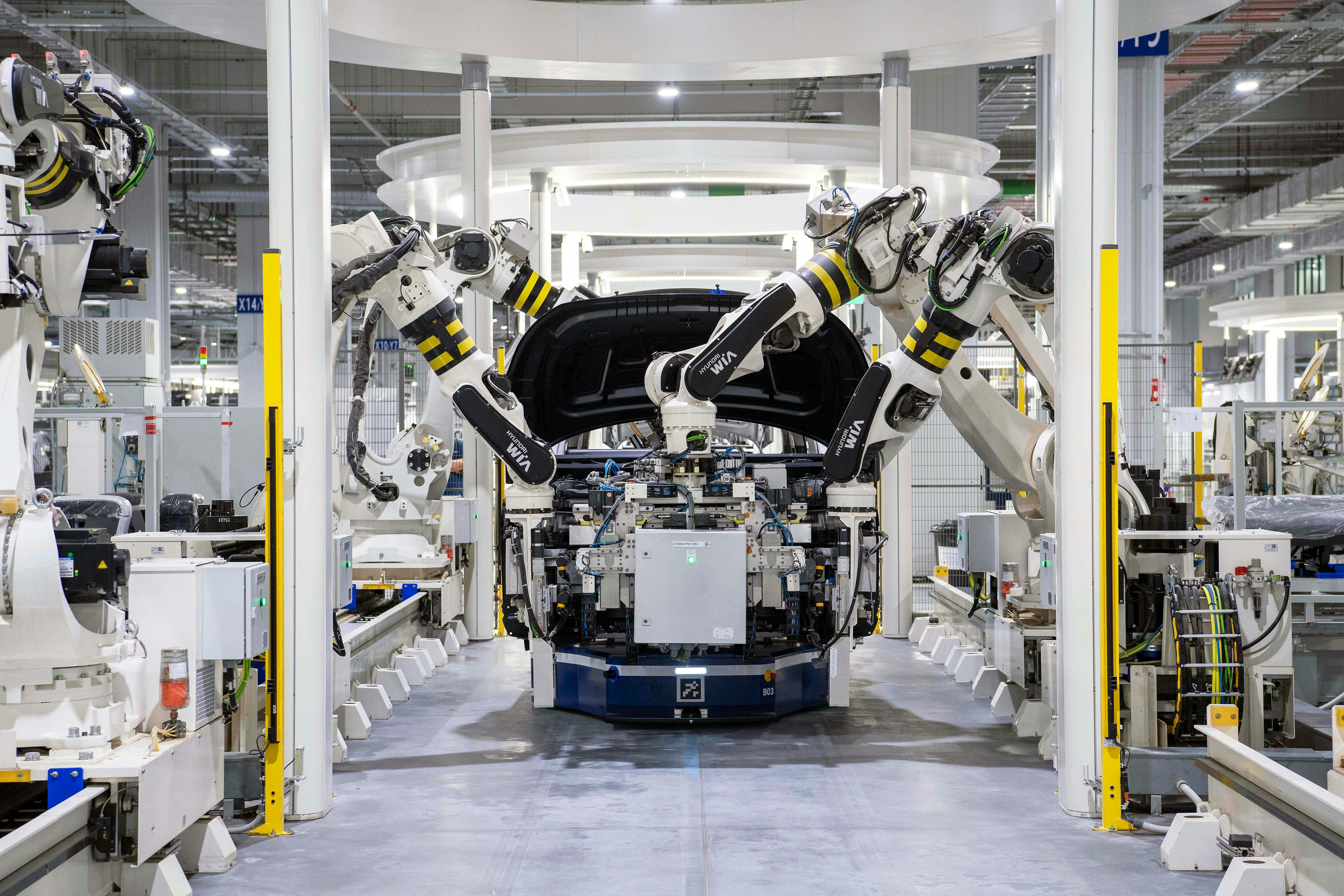
Photo Credit: Hyundai Motor Group/Pexels
Robotic hands serve recreational purposes as well such as the arms of the claw machine. Imagine having them help you get your favourite Labubu soft toy! Find out how you can DIY your own claw machine at home with these simple materials!

Photo Credit: Element5 Digital/Pexels
The Need for Sustainability and Conservation
Beyond their use in industries and everyday convenience, robotic hands
can also play a crucial role in addressing global sustainability challenges.
With their precision and ability to handle delicate tasks, they can be
integrated into smart waste management systems to identify, sort, and process
recyclable materials more efficiently. This helps reduce the environmental
footprint of human consumption and supports efforts to minimize landfill
waste. One key area where robotic technology could make a difference is
in the management of plastic waste, especially the widespread use of disposable
straws, which remains a pressing issue.
Straws are used in large amounts every day across the world. Although some restaurants have phased out their use, many beverage chains (e.g. bubble tea shops) continue to rely heavily on them. Robotic hands could potentially be used to support the collection and sorting of plastic straws for recycling or upcycling, giving these items a second life instead of letting them pollute our environment.
It is estimated that 8.3 billion plastic straws pollute the world's beaches and they are 7th out of the top 10 plastic items found in ocean cleanups. On average, plastic straws take around 200 years to decompose. In total, straw waste adds up to 73,000 metric tons per year, which is about the weight of 540 Boeing 777 planes. (More statistics on straw pollution can be found here.)

Photo Credit: Ocean Cleanup Group/Unsplash
If they are not discarded properly, they eventually end up in oceans where marine animals mistake them as food, leading to suffocation and death. Stomachs of penguins and nostrils of sea turtles have been found perforated by plastic straws .
In parallel, the rise of e-commerce has led to increased cardboard usage, as products are packaged for shipping and delivery. In Singapore alone, e-commerce sales are projected to reach $19.6 billion by 2027 . With this growth comes a surge in cardboard waste, much of which ends up discarded after a single use.

Photo Credit: Tima Miroshnichenko/Pexels
This is where upcycling, combined with the precision and assistance of robotic hands, can offer new possibilities. Upcycling involves creatively transforming waste materials into new, higher-value products with practical uses. Imagine robotic hands sorting and preparing materials like plastic straws and cardboard, assisting makers and crafters in turning trash into treasures. Straws can be used to create decorative lights, mini-Christmas trees, or earrings while cardboard can be reimagined into toys, organizers, or DIY furniture. With a bit of creativity, and perhaps a little robotic help, household waste can be transformed into something beautiful and useful, supporting both innovation and sustainability. Here are 40 ways to repurpose plastic straws! If you are considering cardboard craft work with your kids, check out these 10 DIY ideas to upcycle cardboard as well!

Photo Credit: Freepik
Did you know that Science Centre Singapore has an interactive robot exhibit called Future Makers? Grab a friend or your family and discover it here and learn more about the Science Centre’s sustainability learning programmes.
Building a simple robotic hand
Become a robotic engineer in this holiday activity! Transform cardboard rolls, drinking straws, and air-dry clay into a robotic hand.
Through hands-on design, you will learn about the basic mechanics of robotics, such as joints, levers, and control systems. As you build, you will enhance your problem-solving skills and explore engineering concepts in a playful way. At the same time, you will understand the value of upcycling these materials into a useful product to perform tasks in our daily life.
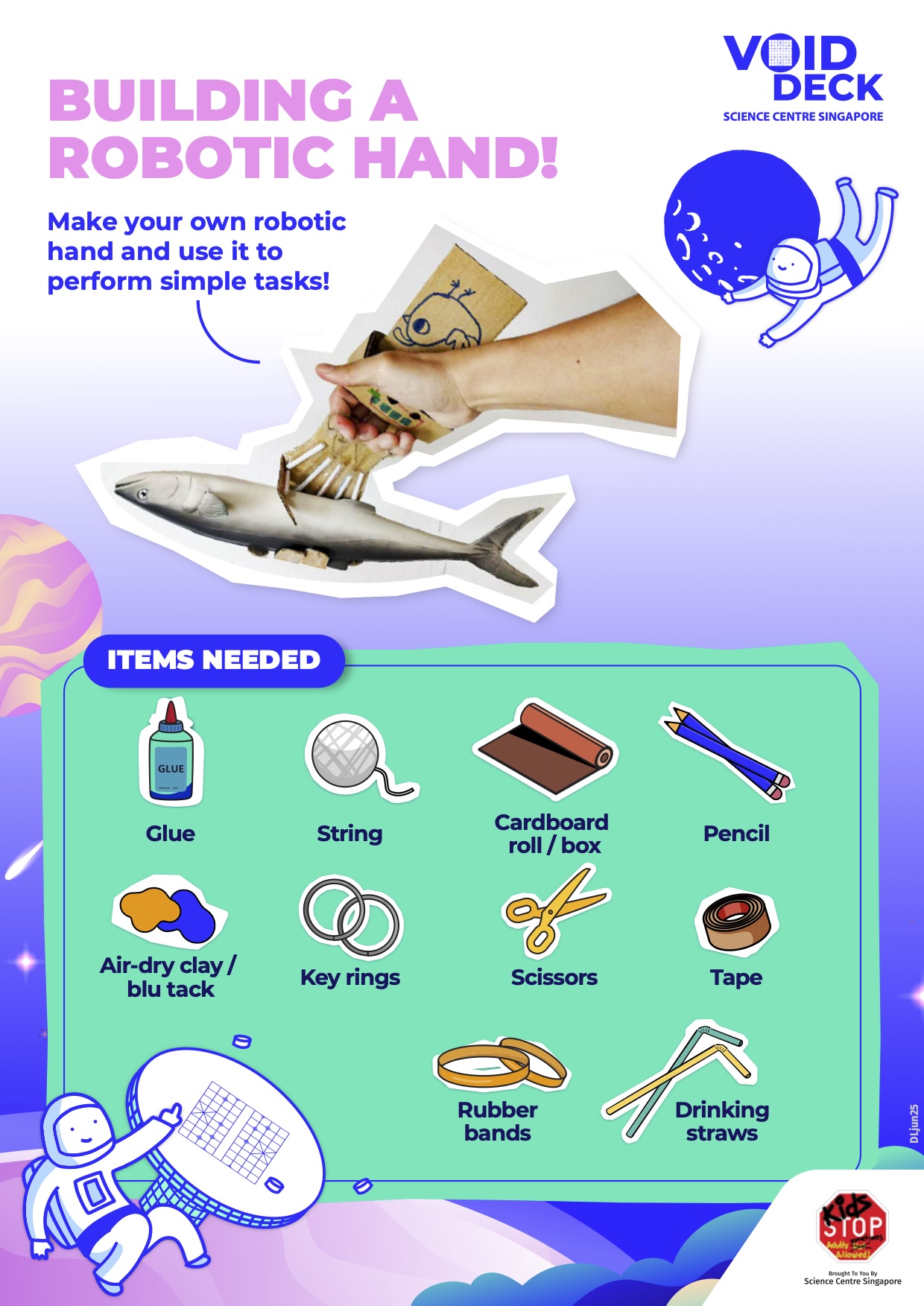
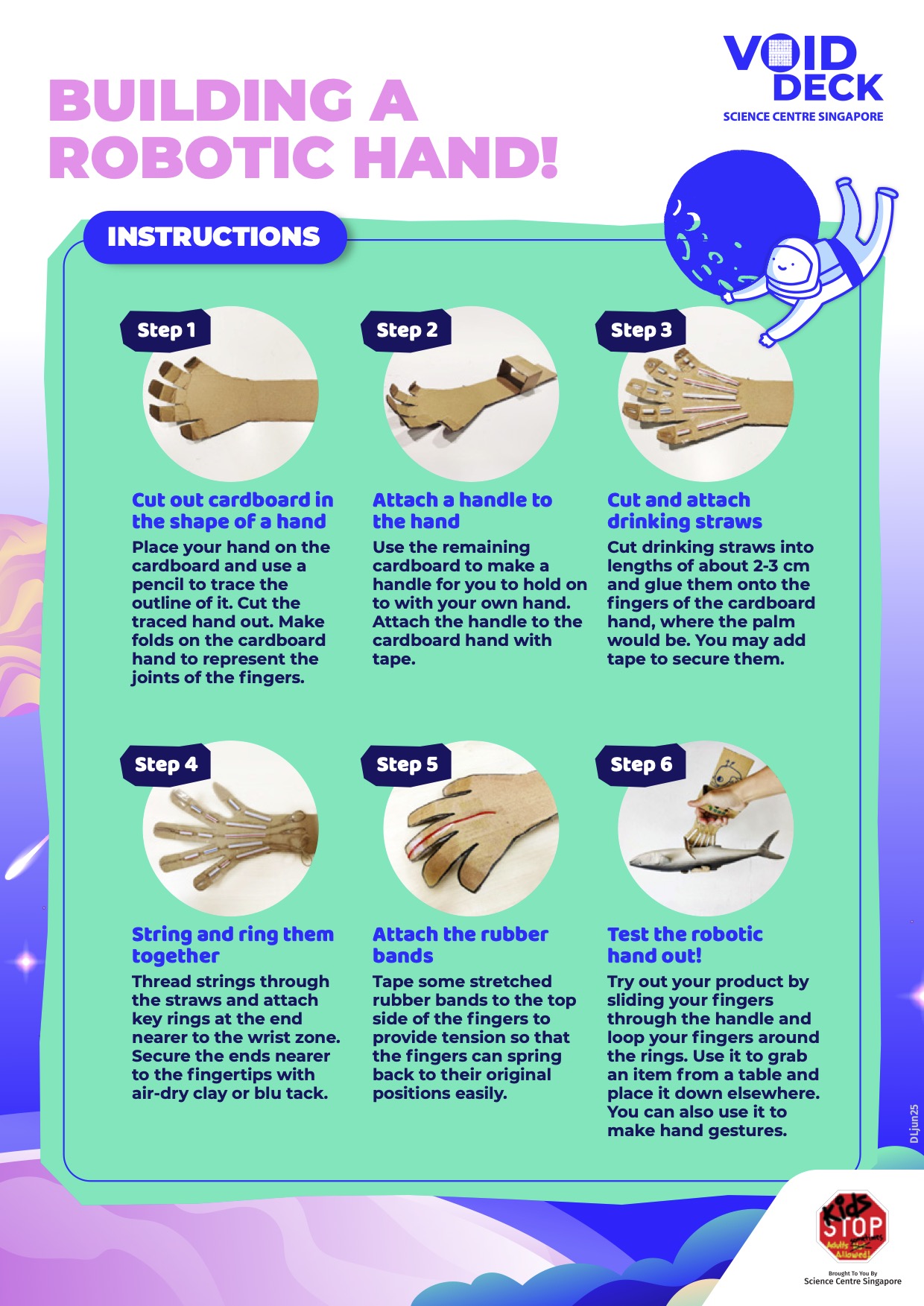
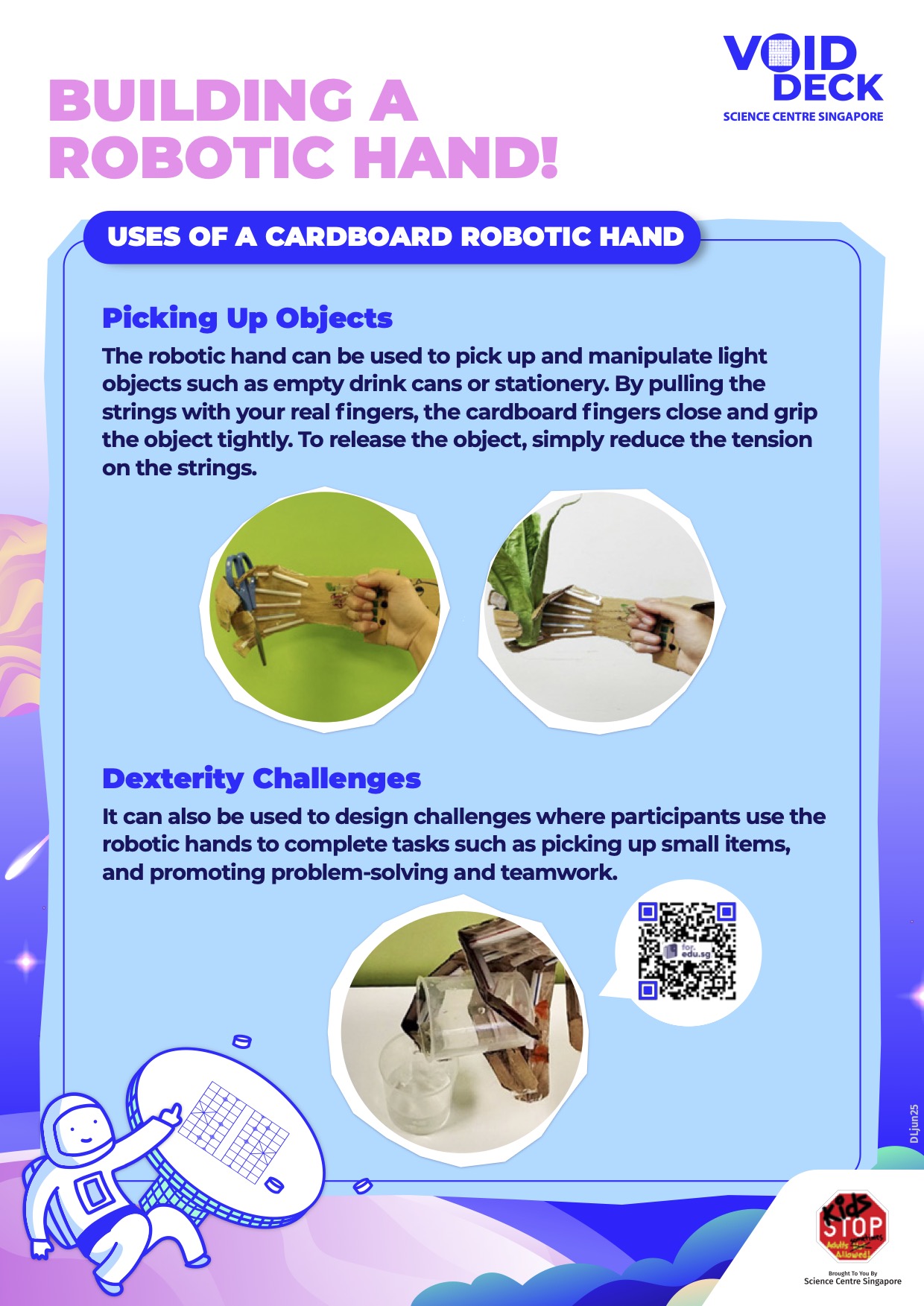
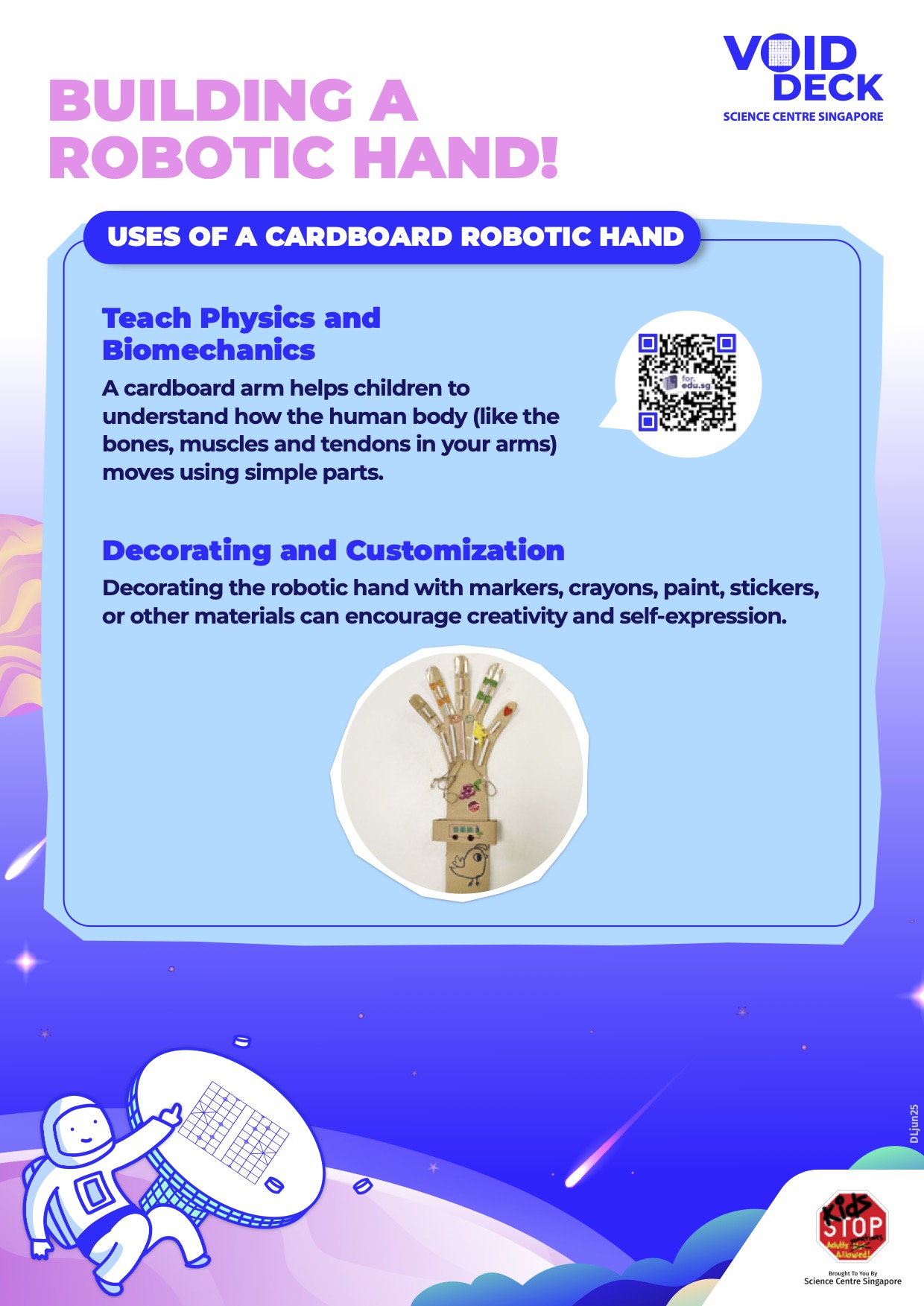
Click on the link below to download a printable version of the activity sheet.
Written by Benjamin Lim
Published: 11 June 2025
Last updated: 30 June 2025

